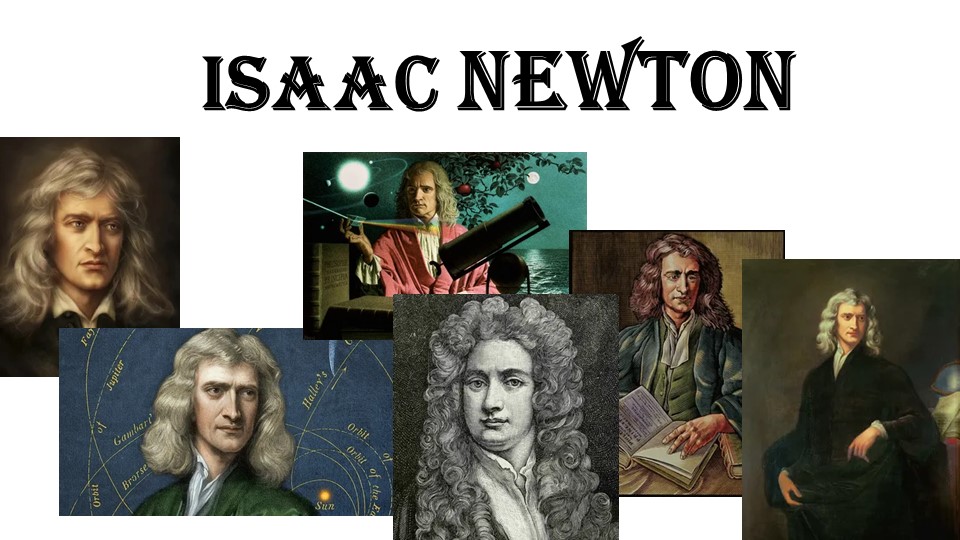Презентация - "Презентация к уроку английского языка по теме "Исаак Ньютон""

- Презентации / Другие презентации
- 3
- 21.10.23
Просмотреть и скачать презентацию на тему "Презентация к уроку английского языка по теме "Исаак Ньютон""
Сайт klass-uchebnik.com предлагает качественные учебные материалы для школьников, родителей и учителей. Здесь можно бесплатно читать и скачивать современные учебники, рабочие тетради, а также наглядные презентации по всем предметам школьной программы. Материалы распределены по классам и темам, что делает поиск максимально удобным. Каждое пособие отличается логичной структурой, доступной подачей материала и соответствует действующим образовательным стандартам. Благодаря простому языку, наглядным схемам и практическим заданиям, обучение становится легче и эффективнее. Учебники подойдут как для ежедневной подготовки к урокам, так и для систематического повторения перед экзаменами.
Особое внимание стоит уделить разделу с презентациями - они становятся отличным визуальным дополнением к теории, помогают лучше понять сложные темы и удерживают внимание учащихся. Такие материалы удобно использовать в классе на интерактивной доске или при самостоятельной подготовке дома. Все размещённые на платформе материалы проверены на актуальность и соответствие учебной программе. Это делает сайт надёжным помощником в образовательном процессе для всех участников: школьников, учителей и родителей. Особенно удобно, что всё доступно онлайн без регистрации и в свободном доступе.
Если вы ищете надежный источник для подготовки к урокам, контрольным и экзаменам - klass-uchebnik.com станет отличным выбором. Здесь вы найдёте всё необходимое, включая "Презентация к уроку английского языка по теме "Исаак Ньютон"", чтобы сделать обучение более организованным, интересным и результативным.
A Mind on Fire
In 1665, at age 22, a year after beginning his four-year scholarship, Newton made his first major discovery: this was in mathematics, where he discovered the generalized binomial theorem. He was awarded his B.A. degree in the same year.
By now his mind was ablaze with new ideas. He began making significant progress in three distinct fields – he would make some of his most profound discoveries in these fields:
calculus, the mathematics of change, which is vital to our understanding of the world around us
gravity
optics and the behavior of light
He did much of his work on these topics back home at Woolsthorpe-by-Colsterworth after the Great Plague forced Cambridge colleges to close.
Isaac Newton’s Scientific Achievements and Discoveries
generalized the binomial theorem
showed that sunlight is made up of all of the colors of the rainbow. He used one glass prism to split a beam of sunlight into its separate colors, then another prism to recombine the rainbow colors to make a beam of white light again.
built the world’s first working reflecting telescope.
discovered/invented calculus, the mathematics of change, without which we could not understand the behavior of objects as tiny as electrons or as large as galaxies.
wrote the Principia, one of the most important scientific books ever written; in it he used mathematics to explain gravity and motion. (Principia is pronounced with a hard c.)
discovered the law of universal gravitation, proving that the force holding the moon in orbit around the earth is the same force that causes an apple to fall from a tree.
Isaac Newton’s Scientific Achievements and Discoveries
ormulated his three laws of motion – Newton’s Laws – which lie at the heart of the science of movement.
showed that Kepler’s laws of planetary motion are special cases of Newton’s universal gravitation.
proved that all objects moving through space under the influence of gravity must follow a path shaped in the form of one of the conic sections, such as a circle, an ellipse, or a parabola, hence explaining the paths all planets and comets follow.
showed that the tides are caused by gravitational interactions between the earth, the moon, and the sun.
predicted, correctly, that the earth is not perfectly spherical but is squashed into an oblate spheroid, larger around the equator than around the poles.
Used mathematics to model the movement of fluids – from which the concept of a Newtonian fluid.
Universal Gravitation and the Apple
Newton’s equation says that you can calculate the gravitational force attracting one object to another by multiplying the masses of the two objects by the gravitational constant and dividing by the square of the distance between the objects’ centers.
Newton’s Laws of Motion
First law: Objects remain stationary or move at a constant velocity unless acted upon by an external force. This law was actually first stated by Galileo, whose influence Newton mentions several times in the Principia.
Second law: The force F on an object is equal to its mass m multiplied by its acceleration: F = ma.
Third law: When one object exerts a force on a second object, the second object exerts a force equal in size and opposite in direction on the first object.








